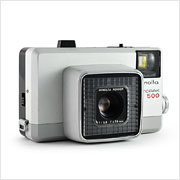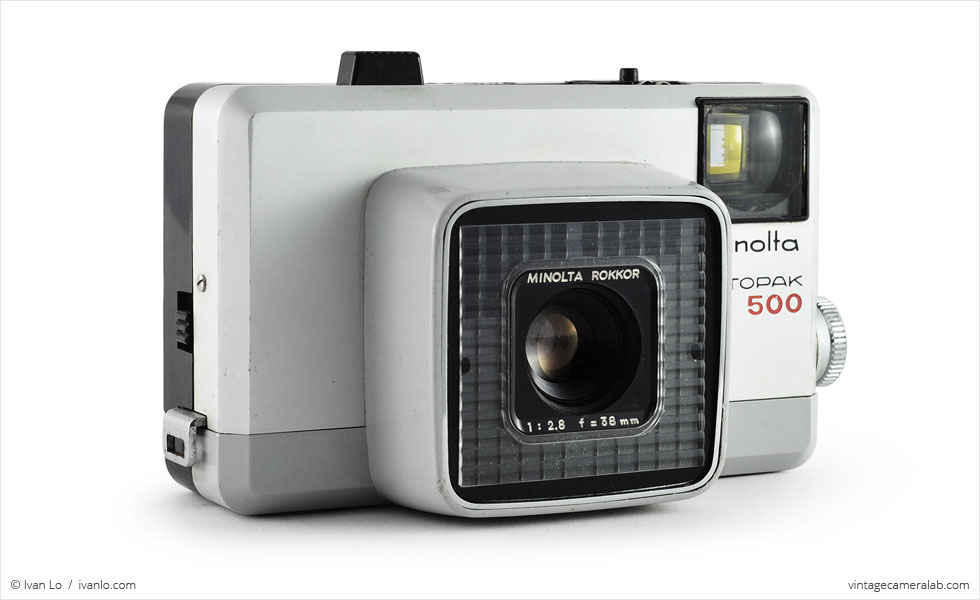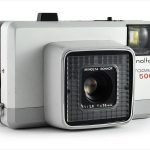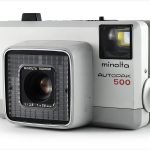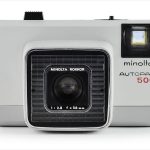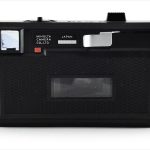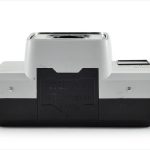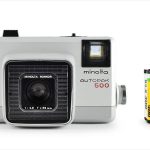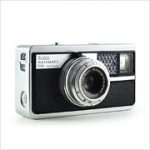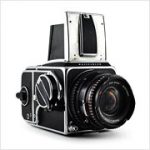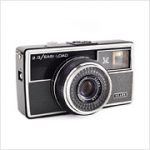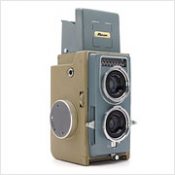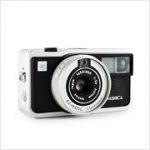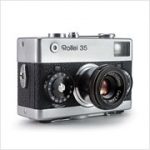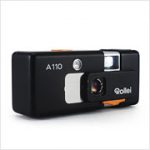Minolta Autopak 500 Specifications
| Manufacturer: | Minolta Camera K.K. |
| Origin: | Japan |
| Made in: | Japan |
| Introduced: | 1966 |
| Type: | Viewfinder |
| Format: | 126 Film |
| Dimensions: | 11.8 x 7.2 x 6 cm |
Minolta Autopak 500 Overview
The Minolta Autopak 500 is a stylish viewfinder camera introduced in 1966 and designed for the 126 film cassette. Rebadged and sold as the Ilford Monarch in the United Kingdom and the Revue-matic 500 in Germany, the Autopak 500 pioneered an auto exposure system capable of automatically firing the flash in low light situations, a feature that has since become standard in all cameras.
Since the 500 is targeted at amateur photographers, there really aren’t any controls to speak of. A metal dial can be found on the user’s left-hand side of the camera which focuses the lens, a surprisingly high quality 38mm f/2.8 Rokkor which is surrounded by a square-shaped selenium cell which powers the camera’s automatic exposure system. An automatically rotating flash cube socket is located on the top of the camera near the viewfinder window and opposite the black rectangular shutter button. The metal film advance lever is on the back right above the film door which is opened via a latch on the user’s right side of the camera, just above the lone strap lug. The battery door on the bottom of the camera can be slid open to accept two AAA size batteries.
I bought the Minolta Autopak 500 because it’s beautiful. Its crisp lines and timeless design is an absolute pleasure to admire, especially when so many of its 126 format contemporaries leave so much to be desired. It’s a good thing it’s so beautiful, as my example has a jammed shutter and the US Social Security Number of one of its owners carved into the plastic.
Find your very own Minolta Autopak 500 on eBay.
McKeown, James M. and Joan C. McKeown’s Price Guide to Antique and Classic Cameras, 2001-2002. (Grantsburg, WI, USA: Centennial Photo Service, 2001), p 297, 472.
